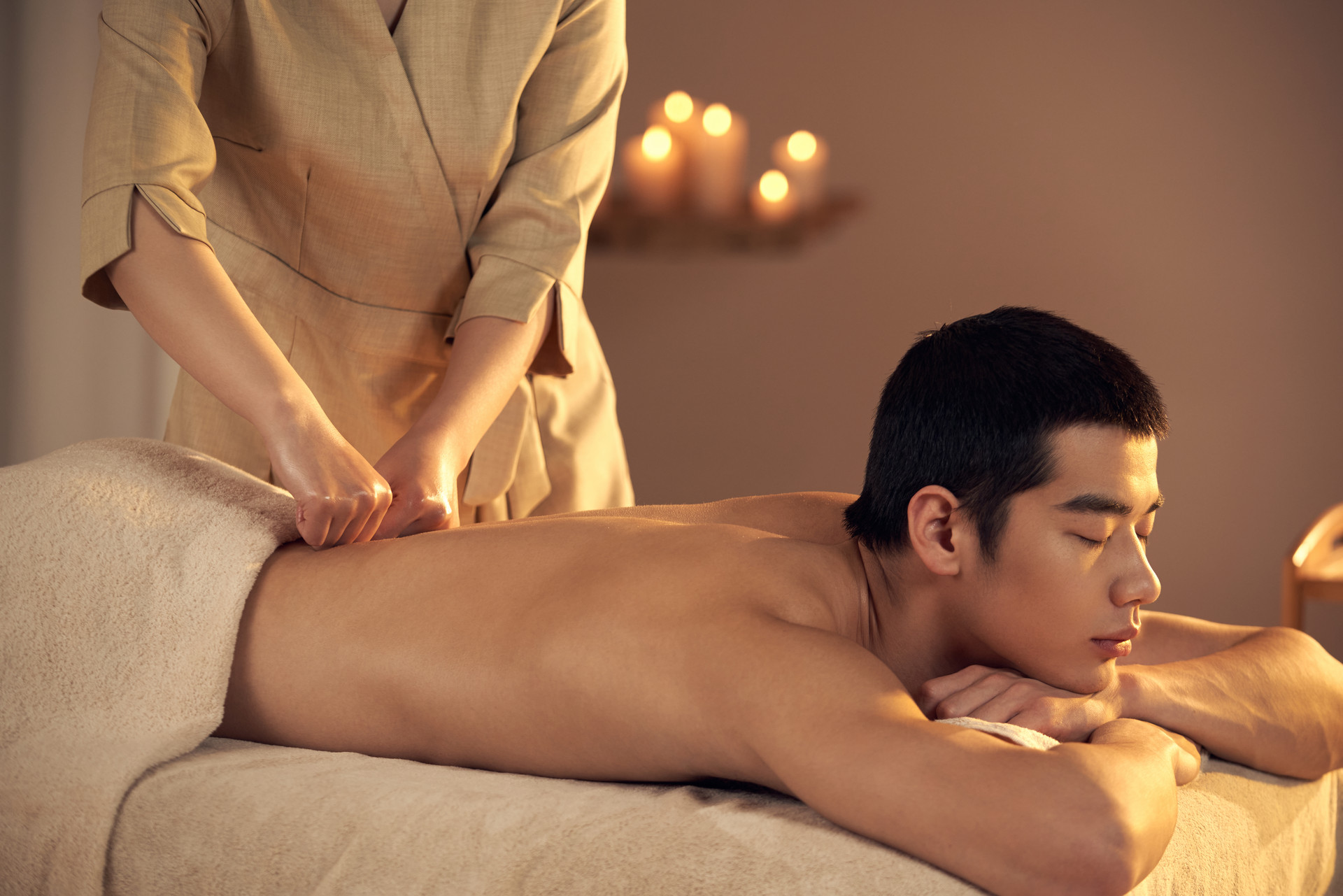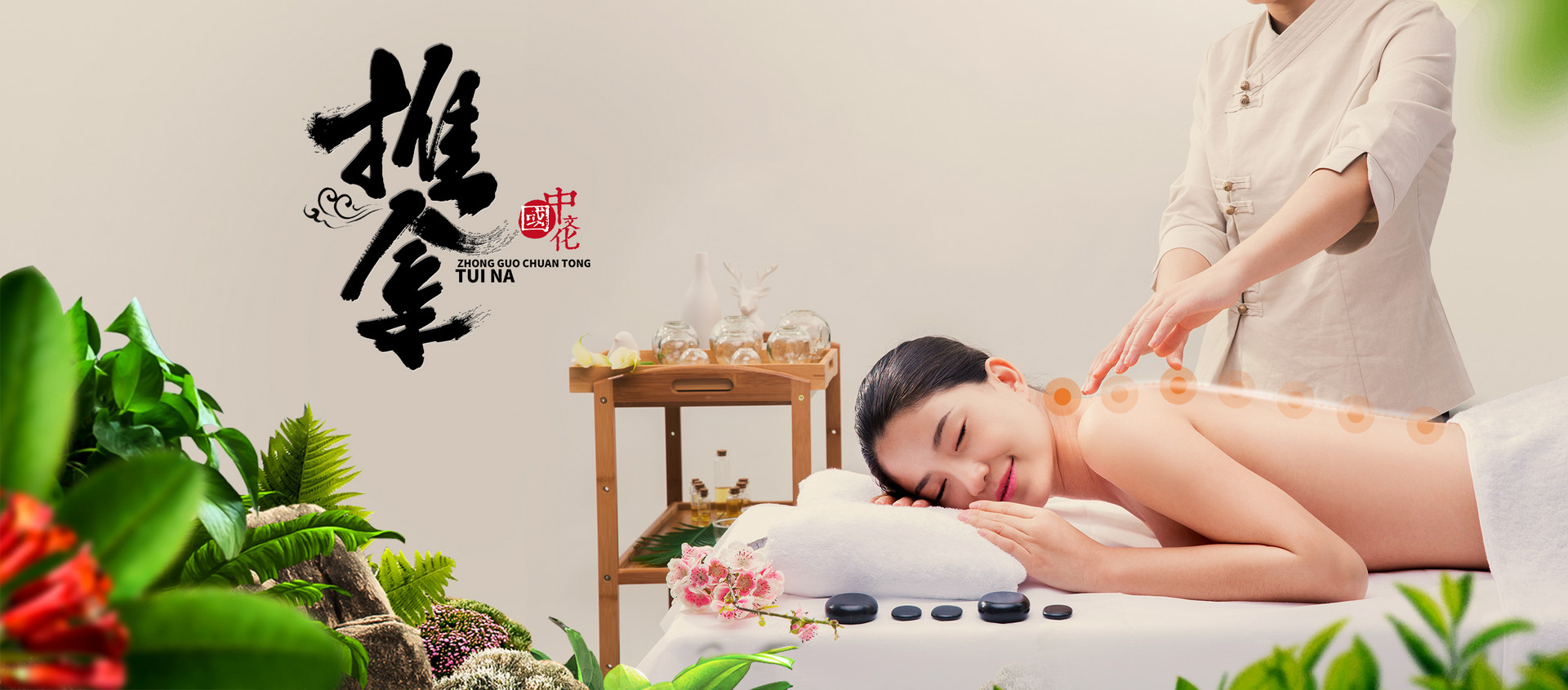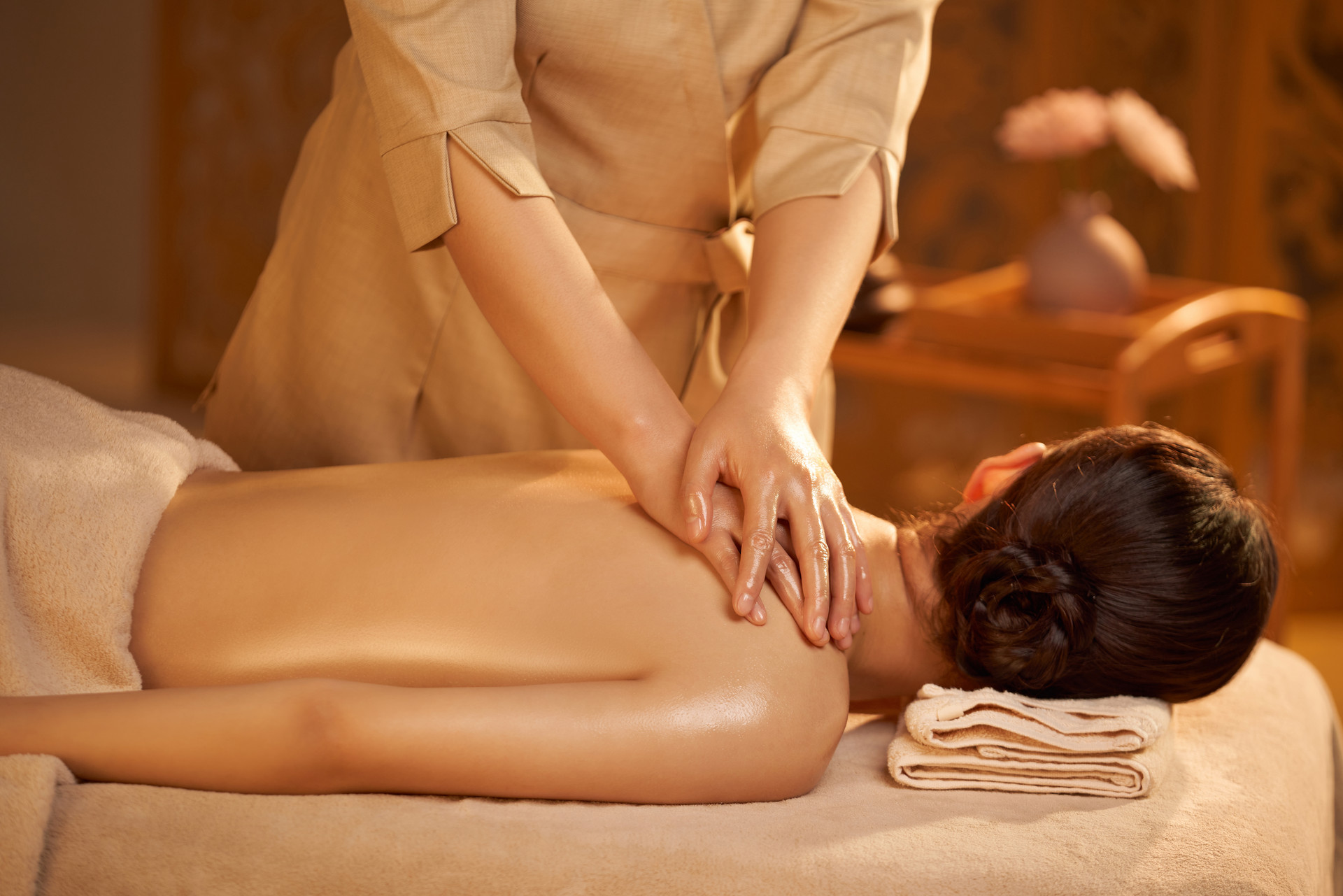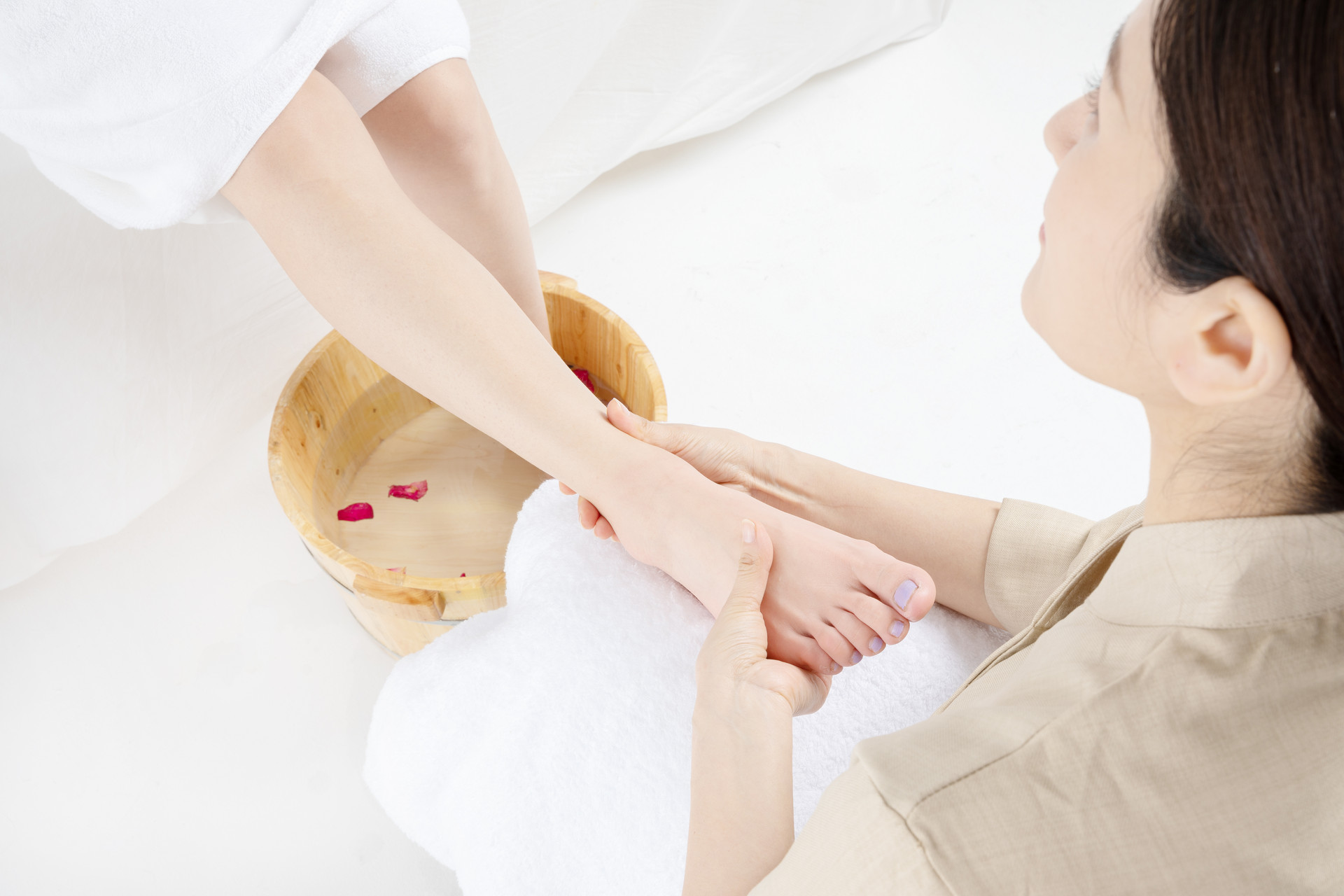Tuina, also known as massage, is a shining pearl in the treasure trove of traditional Chinese medicine. It has a long history and profound origins.
A large number of massage, guidance, and breathing techniques were recorded on silk books and bamboo slips unearthed from the Mawangdui Han tomb in Changsha, reflecting the widespread use of massage therapy in clinical treatment during the Spring and Autumn period or even earlier.
Massage therapy originated in the central region of China. The earliest medical classic, Huangdi Neijing, states: "The central region is flat and humid, where all things are born. Its people have a varied diet and little physical labor, thus they are prone to diseases such as muscle weakness, cold, and fever. The appropriate treatment is through guidance, traction, and massage, which also originated from the central region." The central region mentioned here refers to the central part of China, specifically the area around Luoyang, Henan Province.
During the Spring and Autumn period, there was a successful case of Bian Que saving a patient from death. According to the Zhouli Shu'an, "When Bian Que passed through the Guo territory, he saw the prince of Guo suffering from death-like symptoms. He instructed his disciples Ziming to cook soup, Ziyi to check the pulse, and Ziyou to perform massage." By combining multiple methods, the prince of Guo was successfully cured.
During the Qin and Han dynasties, guidance, breathing techniques, and ointment massage were included in preventive healthcare methods. Zhang Zhongjing, a medical sage in the Han dynasty, compiled the book "Jinbian Yaolue" based on his many years of practical experience. He believed, "If a person can be cautious and not let pathogenic wind obstruct the meridians, or if the meridians are moderately unobstructed and the internal organs are not affected, then treatment is appropriate. When the limbs feel heavy and sluggish, guidance, breathing techniques, acupuncture, and ointment massage should be used to avoid blockage of the nine orifices."
During the Sui and Tang dynasties, with the development of productivity and flourishing culture, the field of medicine gradually improved. Massage was officially included in the national medical education system. There were specialized massage departments, massage doctors, and massage scholars. According to the "New Tang Book - Biographies of Officials," it was recorded, "There is one massage doctor and four massage practitioners who are ranked below the ninth rank, responsible for teaching guidance and eliminating diseases." This means that the ancient guidance techniques were officially included in the curriculum at that time.
During the Song and Jin dynasties, the scope of Tuina therapy became more extensive. Pang Anshi, a famous physician in the Song dynasty, used abdominal massage to induce childbirth: "There was a pregnant woman who had been in labor for seven days without success... She was instructed to have her family members warm her waist and abdomen with soup and perform self-massage. The pregnant woman experienced slight stomach pain and gave birth to a baby boy during moaning." This case can be considered the first recorded case of obstetric massage.
During the Ming and Qing dynasties, traditional Chinese medicine made significant progress, and Tuina therapy became more mature. The field of pediatric massage made breakthroughs, and orthopedic massage and health maintenance massage formed a rich knowledge system. Many books on massage medicine were published during this period, and the most representative one is "Xiao Er An Mo Jing" (Classic of Pediatric Massage), which is considered the oldest existing Tuina book in China. More than thirty books on pediatric massage medicine, such as "Xiao Er An Mo Fang Mai Huo Ying Mi Zhi Quan Shu" (Secrets of Pediatric Massage), were published during this time. It was during this period that the term "massage" was replaced by "Tuina," reflecting the development of massage therapy and the improvement of people's understanding of Tuina. This marked a significant leap in the history of Tuina.
During the Qianlong period of the Qing dynasty, the government compiled the comprehensive medical book "Yi Zong Jin Jian - Zheng Gu Xin Fa Yao Zhi" (Golden Mirror of Medicine - Essential Methods for Orthopedics) to systematically summarize and compile the achievements and folk experiences of orthopedic massage since the Song dynasty. The book categorized orthopedic massage into eight techniques: touch, connect, hold, lift, press, rub, push, and pull. Therefore, the Ming and Qing dynasties were the most prosperous periods for the publication of Tuina monographs in Chinese history. Almost all the existing ancient Tuina books were produced during this period.
After the founding of the People's Republic of China, under the care of the Party's policies on traditional Chinese medicine, Tuina therapy rapidly developed. In 1956, Tuina became an official subject in the national education system. Tuina training classes were established in Shanghai, Tuina specialized outpatient departments were established, Tuina specialized schools were founded, and renowned Tuina experts were invited to teach, starting a planned and formal education system. In the 1950s, the Tuina outpatient department in Shanghai was divided into pediatric disease Tuina, internal gynecology Tuina, and musculoskeletal disease Tuina. It also treated some surgical and ophthalmological diseases.
Tuina schools focused on the exploration, compilation, and research of Tuina history and literature, and made a lot of efforts to inherit and promote Tuina therapy. The therapeutic effects and principles of Tuina were explored theoretically. The technical requirements for Tuina techniques were clearly stated, emphasizing endurance, strength, uniformity, and gentleness to achieve depth.
In 1974, the Acupuncture, Tuina, and Orthopedics specialty was established in Shanghai University of Traditional Chinese Medicine, and Tuina therapy reached a new level. In the late 1970s and early 1980s, acupuncture and Tuina courses were opened in Chinese medicine colleges across the country, and acupuncture, Tuina, and orthopedics departments were established. In 1987, the National Education Commission officially included Tuina as a major in the national higher education system. As a result, most Chinese medicine colleges in the country established acupuncture, Tuina, and orthopedics departments. Shanghai University of Traditional Chinese Medicine was the first to cultivate a group of high-level Tuina professionals, and the training of Tuina talents entered the track of national higher education.
On this basis, the research on the mechanism of Tuina therapy has become more in-depth and extensive. Some researchers have used intervertebral disc nucleotomy surgery to observe the mechanism of Tuina therapy for herniated discs under fully exposed surgical fields. Some have used computer analysis to study the three-dimensional mechanics of Tuina techniques. Some have analyzed the biomechanics of oblique traction to guide the clinical use of force and improve the accuracy of techniques. Some have discovered that Tuina can change the ST wave and left ventricular function in patients with coronary heart disease through electrocardiography. Some have explored the analgesic mechanism of Tuina by studying pain-inducing substances such as endorphins and 5-hydroxytryptamine in the blood. Some have used immunological methods to confirm that Tuina can improve the body's immune function and increase white blood cell count.
In summary, although Tuina is an ancient medical method, it has unique medical effects. When combined with modern scientific medicine, it will definitely make greater contributions to human health.
- Home /
- Traditional Chinese Massage /
- Massage and health care /
- Contents
The History and Potential of Tuina Therapy in Traditional Chinese Medicine
Everyone Is Watching
-
 The Healing Touch: Exploring the Benefits of Tuina Massage
The Healing Touch: Exploring the Benefits of Tuina MassageTuina, also known as massage, was formerly known as "pressing and rubbing". It is a traditional Chinese therapeutic technique that has been practiced for thousands of years. Tuina involves the manipul
December 1, 2023 -
 The Power of Acupoint Massage for a Better Complexion
The Power of Acupoint Massage for a Better ComplexionMassage is one of the ancient health methods that has been passed down in China to this day. It is a historical experience summarized by generations of traditional Chinese medicine practitioners and i
April 14, 2024 -
 The Profoundness of Chinese Medicine Massage: Techniques for Full Body Health
The Profoundness of Chinese Medicine Massage: Techniques for Full Body HealthAs we know, massage can not only help us relax our nerves but also relieve stress, which is very beneficial to our body. So what are the correct health massage knowledge? And different parts of the bo
April 11, 2024 -
 Unlocking Health Benefits: The Power of Massage on Zu San Li Acupoint
Unlocking Health Benefits: The Power of Massage on Zu San Li AcupointMassage is one of the ancient Chinese methods of health preservation. Massage mainly uses the force of pressure to stimulate the acupoints of the body, thereby relieving fatigue and promoting blood ci
April 9, 2024 -
 Revitalizing Your Digestion: The Power of Massage Therapy
Revitalizing Your Digestion: The Power of Massage TherapyMassage therapy is one of the ancient health care therapies that has been passed down in China to this day. Massage mainly involves pressing the body's acupoints, which helps to relieve fatigue, clear
March 29, 2024

Hot Picks
-
 1Effective Massage Therapy for Relieving Toothache: A Natural Approach to Dental Pain
1Effective Massage Therapy for Relieving Toothache: A Natural Approach to Dental PainPeople eat a variety of foods every day, but they often neglect oral hygiene and fail to protect their teeth, which can lead to gum inflammation and toothache. In order to prevent toothache in the fut
April 11, 2024 -
 2The Healing Power of Traditional Chinese Massage: Techniques and Methods Explained
2The Healing Power of Traditional Chinese Massage: Techniques and Methods ExplainedIn today's society, the pace of life is excessively fast, diet is unreasonable, and staying up late every day has led to suboptimal health becoming a common problem for most people. As life stress con
April 2, 2024 -
 3Men's Health: 7 Acupoints for a Healthy Lifestyle
3Men's Health: 7 Acupoints for a Healthy LifestyleWith the development of society and the improvement of people's living standards, it is not only women and children who pay attention to health, but even men have started to take care of their own hea
March 17, 2024 -
 4Revitalizing Your Skin: The Power of Hand Massage for Busy Career Women
4Revitalizing Your Skin: The Power of Hand Massage for Busy Career WomenFor busy career women who have to leave early and come back late, how to take care of the acne and rough skin caused by staying up late is a vexing and urgent matter. In fact, busy individuals ca
December 11, 2023 -
 5Relieving Dysmenorrhea: Self-Care Massage Techniques for Menstrual Pain Relief
5Relieving Dysmenorrhea: Self-Care Massage Techniques for Menstrual Pain ReliefDysmenorrhea refers to the pain and discomfort that women experience in the lower abdomen or lower back during and before their menstrual period. It can even extend to the sacrum. This pain occurs wit
November 28, 2023

